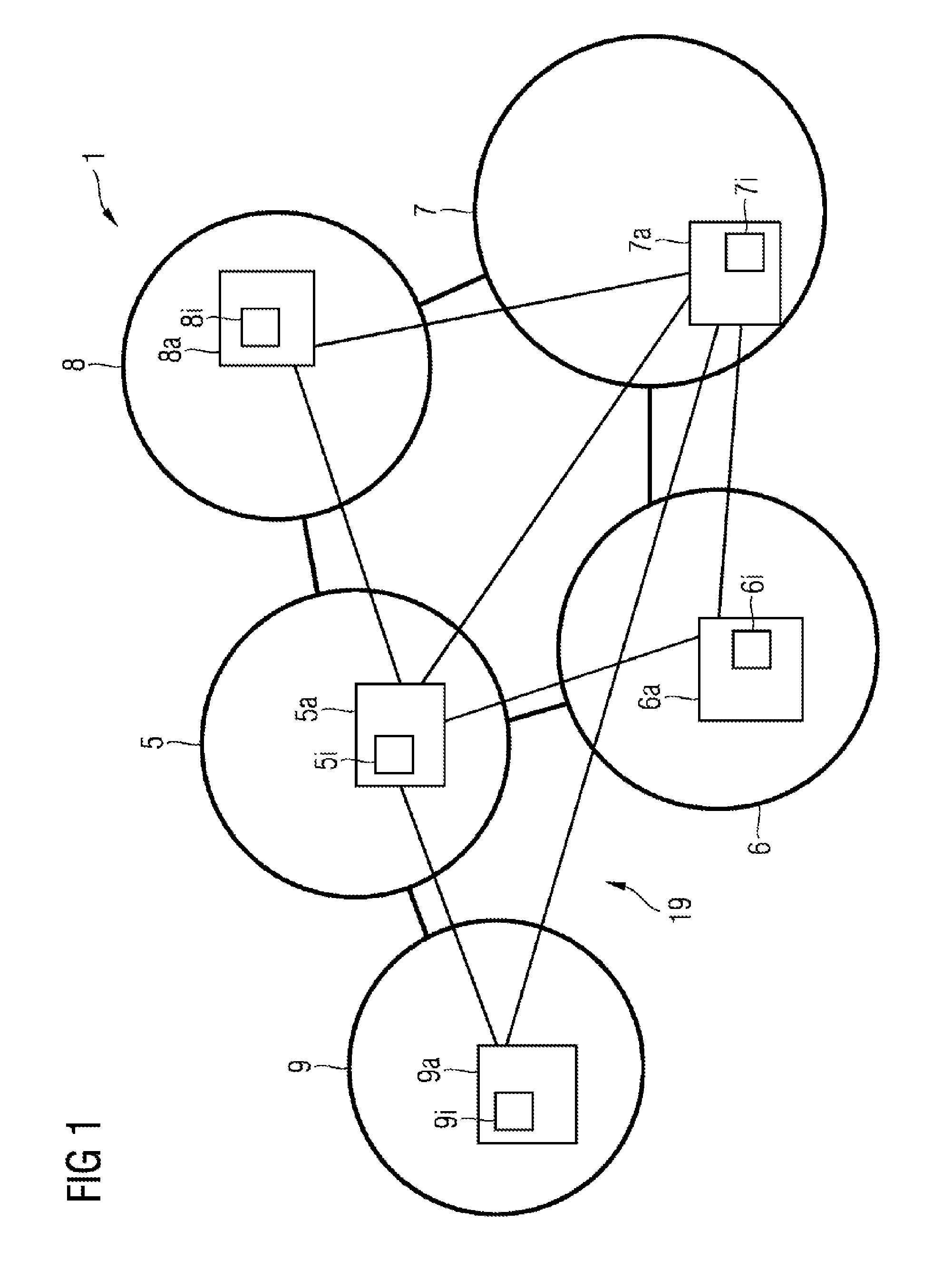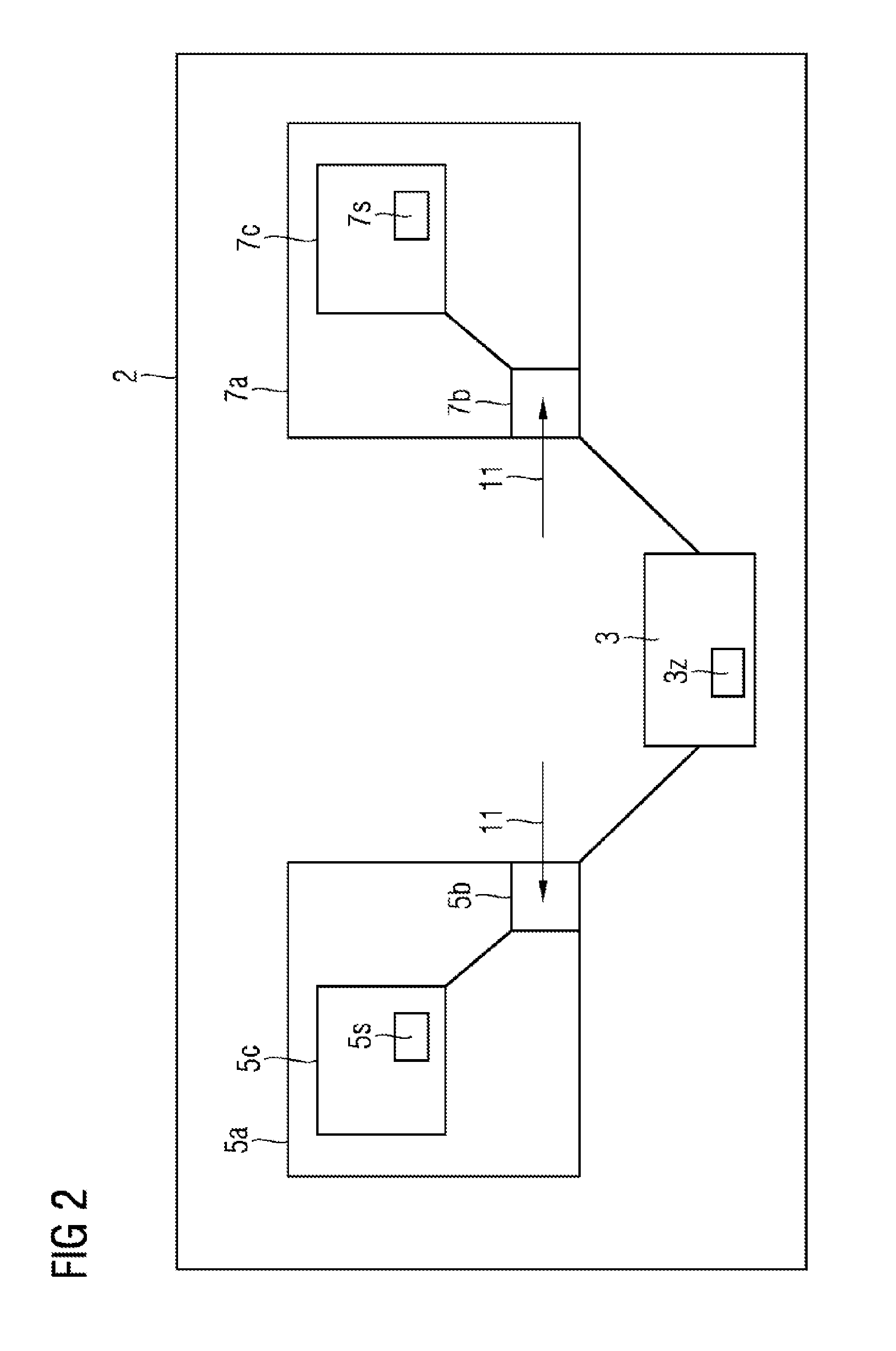Optimizing the distribution of electrical energy
a technology of electrical energy and distribution, applied in the field of distribution of electrical energy, can solve the problems of communication bottleneck, single point of failure, individual central management nodes configured as dispatchers entail disadvantages, etc., and achieve the effect of reducing individual disadvantages and increasing the outlay for their implementation
- Summary
- Abstract
- Description
- Claims
- Application Information
AI Technical Summary
Benefits of technology
Problems solved by technology
Method used
Image
Examples
Embodiment Construction
[0022]Elements having an identical function and effect are provided with the same reference signs in the figures.
[0023]FIG. 1 shows a power grid 1, which is controlled by a data network 19, in accordance with one exemplary embodiment of the invention.
[0024]The power grid 1 is highlighted in FIG. 1 by the elements depicted using bold lines and comprises the autonomous grid regions 5, 6, 7, 8, 9 and electrical connections that connect the autonomous grid regions to one another. As illustrated in FIG. 1, not all of the autonomous grid regions need be connected to all of the other autonomous grid regions. Rather, there are diverse possibilities for interconnecting the autonomous grid regions. In reality, in a large power grid generally not all grid regions are connected to all grid regions, for cost reasons and on account of geographical conditions.
[0025]The data network 19 is highlighted in FIG. 1 by the elements depicted using lines of normal thickness and comprises the entities 5a, 6...
PUM
 Login to View More
Login to View More Abstract
Description
Claims
Application Information
 Login to View More
Login to View More - R&D
- Intellectual Property
- Life Sciences
- Materials
- Tech Scout
- Unparalleled Data Quality
- Higher Quality Content
- 60% Fewer Hallucinations
Browse by: Latest US Patents, China's latest patents, Technical Efficacy Thesaurus, Application Domain, Technology Topic, Popular Technical Reports.
© 2025 PatSnap. All rights reserved.Legal|Privacy policy|Modern Slavery Act Transparency Statement|Sitemap|About US| Contact US: help@patsnap.com



